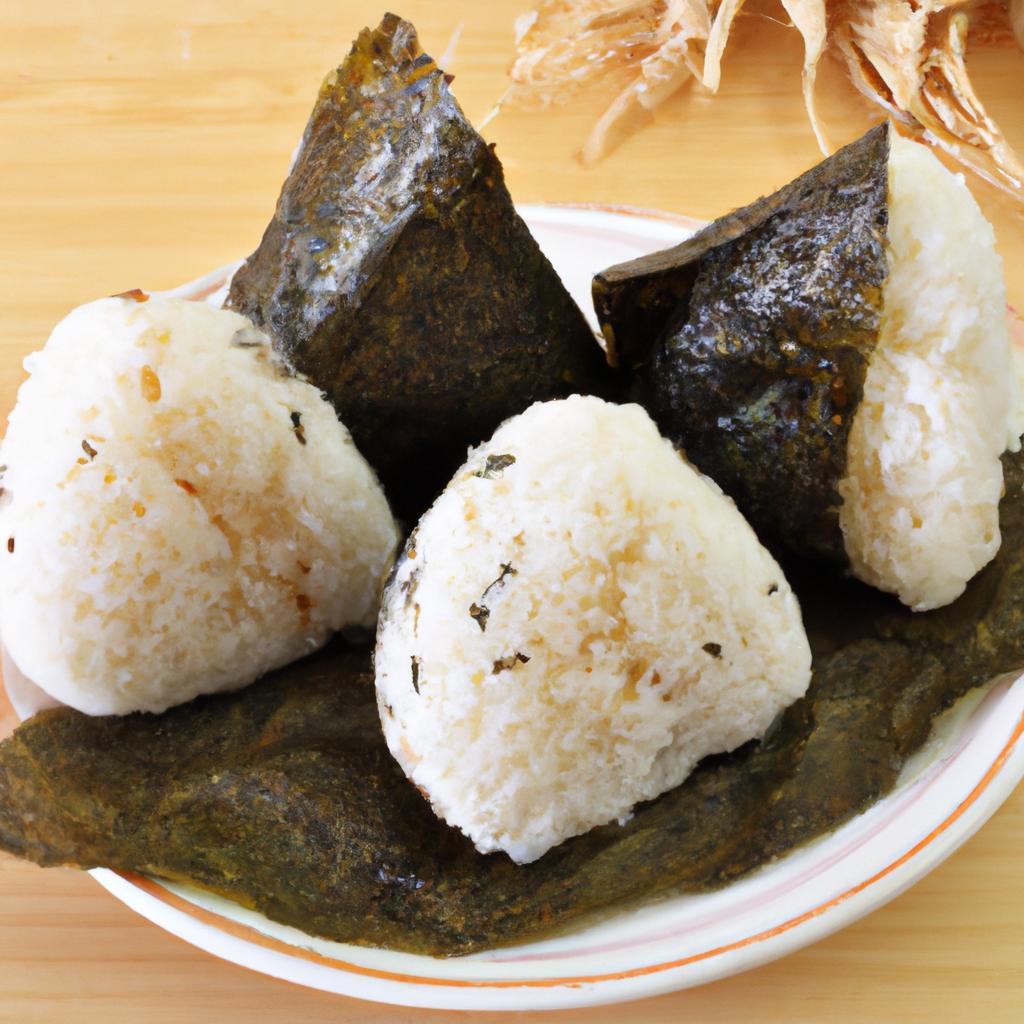Onigiri rice balls

Onigiri, also known as Omusubi or rice balls, is one of the most celebrated and cherished foods in Japan. Made with simple, yet delightful ingredients, these traditional rice balls are the perfect snack for all occasions. As a matter of fact, onigiri is a staple of Japanese cuisine, and its popularity has spread across the globe.
The origins of onigiri date back to the 11th century when Samurai warriors would pack the rice balls as an easy-to-carry and convenient meal for battle. The humble rice ball has come a long way since then and is now enjoyed by people of all ages in Japan and worldwide.
With the Japanese word “nori” meaning seaweed, the most common variety of onigiri is wrapped in a sheet of dried seaweed or Nori, while the interior is stuffed with various ingredients or flavored with seasoning. Some onigiri are sweet, while others are spicy, and they can even contain fish, chicken, or any other meat of choice. They can also be vegetarian or vegan, and the filling can range from simple to elaborate, depending on the preference of the person making it.
The key component of onigiri is, of course, the rice; Japanese short-grain rice, in particular, is perfect for making onigiri. Sushi rice is also an excellent option since it sticks together well, making it easier to shape into triangular or round balls. On its own, Japanese rice is nutritious and dense, providing energy and a satisfying sense of fullness.
While there are various ways to make onigiri, one of the most popular is to mix the cooked rice with a mixture of vinegar, salt, and sugar. This seasoning mix gives the rice a sweet and slightly sour flavor and enhances the overall taste of the onigiri. The rice is then shaped into triangles or spheres, and a filling is placed in the middle before being shaped back into a ball.
The filling options for onigiri are almost unlimited. From pickled plums “Umeboshi,” to seasoned vegetables, seafood or fried egg, the ingredients can be easily mixed and matched and the result will be equally delicious. When you have your filling, you can put it in the center of your rice ball, cover it up, mold it into a firm shape, and voila! You have an onigiri.
Onigiri is not only delicious but also versatile. As they are meant to be held in the hands, they are perfect for packing for lunch, taking on picnics, or simply snacking on the go. They also make excellent bento box fillers for kids’ and adults’ lunchboxes.
In conclusion, onigiri, the humble Japanese rice ball, is a delightful, easy-to-make, and healthy snack that is enjoyed by people worldwide. They are a perfect example of Japanese ingenuity, which has stood the test of time. With their many variations and versatility, these delightful rice balls are sure to delight all who taste them. So why not try making Onigiri at home today? Even if it may take a bit of practice to make them look as good as they taste, they will surely be a delicious, healthy, and easy to prepare meal that everyone will want to come back for again and again.
Ingredients:
-2 cups sushi rice -3 cups water -3 tablespoons rice vinegar -1 tablespoon sugar -1 tablespoon salt -4-5 sheets of Nori seaweed -1 can of tuna, drained -Mayonnaise, to taste -Soy sauce, to taste -2 tablespoons chopped scallions
Instructions:
-
Rinse the sushi rice in a strainer and place it in a large pot with 3 cups of water. Cover the pot and bring the rice and water to a boil.
-
Turn the heat to low and let the rice simmer for 18-20 minutes until cooked.
-
In a small bowl, mix together the rice vinegar, sugar, and salt.
-
Spread the cooked rice over a large surface and sprinkle the vinegar mixture over the rice while it’s still warm.
-
Use a rice paddle or spatula to gently mix the rice and vinegar together.
-
In a separate bowl, mix the drained tuna with mayonnaise and soy sauce to taste. Stir until the mixture is smooth.
-
Cut the Nori sheets into thin strips or squares.
-
Wet your hands with water and use them to shape the rice into small balls.
-
Flatten out each ball of rice and place a spoonful of the tuna mixture in the center. Add some chopped scallions to the tuna if desired.
-
Close the rice around the filling and shape it into a ball again.
-
Wrap each Onigiri with a strip or square of Nori seaweed.
-
Serve and enjoy!